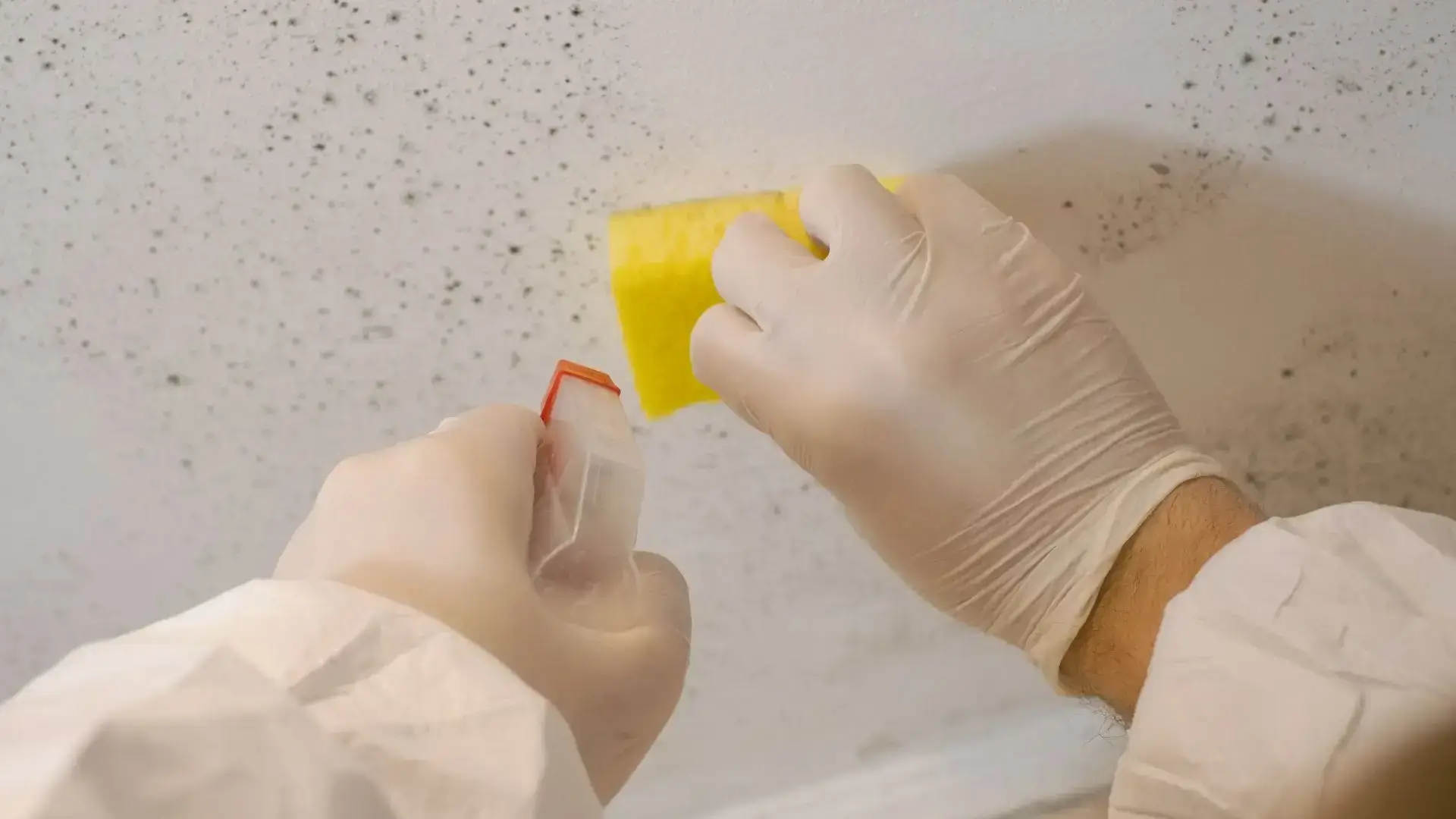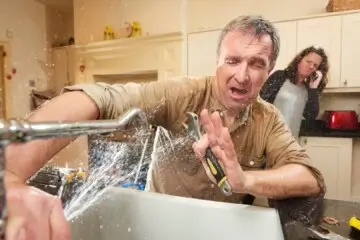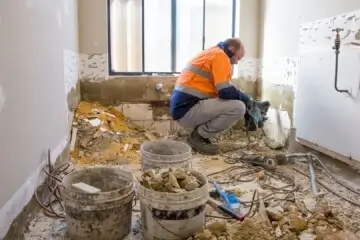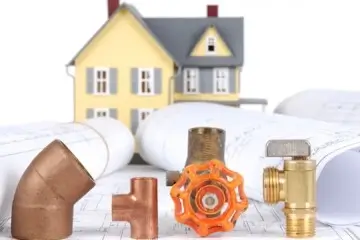When addressing mould in your kitchen, it is important to focus on thorough cleaning to achieve a mould-free environment. Start by gathering gloves, a mask, vinegar, and baking soda. Remove any stains and debris, ensuring good ventilation in the area. Scrub the affected surface with water and a mild detergent, making sure to dry it completely to prevent regrowth. Next, use a specialized mould removal solution according to the instructions provided. To prevent future mould growth, address any sources of moisture in your kitchen. By emphasizing proper ventilation and maintenance, you can discover more ways to maintain a mould-free kitchen.
Contact CAN Plumbing and Drainage for all your Kitchen Needs
When addressing your kitchen needs, trust CAN Plumbing and Drainage in Mississauga for expert assistance. Managing mould in the kitchen is a common challenge, but with the right approach, it can be effectively dealt with. To eliminate mould, thorough cleaning of affected areas with appropriate cleaning agents is essential. CAN Plumbing and Drainage in Mississauga specializes in mould removal, ensuring a mould-free kitchen. Proper ventilation is also crucial to prevent mould recurrence. By maintaining adequate airflow in your kitchen, you can reduce the risk of future mould growth. Rely on CAN Plumbing and Drainage in Mississauga to help you maintain a clean and mould-free kitchen environment. Contact us today!

CAN Plumbing and Drainage Services Related to Kitchen
At CAN Plumbing and Drainage in Mississauga, we specialize in providing plumbing services for kitchen renovations and remodels. Our experienced plumbers in Mississauga is well-equipped to handle all plumbing needs related to kitchen upgrades or renovations. Whether you need to install new fixtures, upgrade your pipes, or completely remodel your kitchen, you can rely on CAN Plumbing and Drainage in Mississauga to get the job done efficiently and effectively.
Kitchen Renovation Plumbing
During a kitchen renovation, it is crucial to address plumbing and drainage services related to the kitchen to ensure functionality and efficiency. Mold in kitchen cabinets can be a common issue, so it is vital to ensure proper plumbing connections and address any leaks. By fixing any damp and mold issues during the renovation process, you can prevent mold from reoccurring and maintain a healthy kitchen environment. Additionally, when renovating a kitchen with wood cabinets, it is essential to have a professional plumber assess the plumbing system to avoid potential water damage and mold growth. Proper plumbing installation and maintenance are key factors in ensuring a successful kitchen renovation that is free from mold and dampness.

Kitchen Remodel Plumbing
When undergoing a kitchen remodel, it is crucial to address plumbing and drainage services to ensure the functionality of the space and prevent mold and damp issues in the future. Proper plumbing installation and maintenance are essential in preventing problems like black mold and dampness, which can result from leaks or inadequate ventilation. It is vital to verify that all plumbing fixtures are correctly installed and working efficiently during a kitchen remodel to avoid water damage that could lead to mold growth. Regular inspections and maintenance of plumbing systems can help detect and address any leaks promptly. Additionally, using natural remedies l ike vinegar can help prevent mold growth in areas of the kitchen prone to dampness during a remodel.

Identifying the Mould Problem
Upon entering the kitchen, one may notice a musty odor and dark spots on surfaces, indicating a potential mould problem that needs to be identified and addressed promptly. Black mould, commonly found in damp areas, thrives in environments with high condensation levels. To accurately identify the mould problem, one must locate the source of moisture that is promoting its growth. It’s vital to inspect areas where water accumulates, such as under sinks, around windows, or near leaky pipes. If left unattended, mould can spread rapidly, releasing harmful mold spores into the air. Immediate action is necessary to prevent further contamination. Removing the mould off the wall is essential, but understanding and eliminating the root cause is paramount to prevent its recurrence.

Gathering Necessary Supplies
Acquiring the necessary supplies for mould removal is crucial to effectively address the issue and prevent its further spread in the kitchen environment. To safely remove and prevent the spread of mold, you will need supplies such as gloves, a mask, goggles, a scrub brush, a sponge, a bucket, detergent, white vinegar, baking soda, and a cloth for drying. These items are essential for the process of cleaning and disinfecting the affected areas. Remember to scrub away the mold gently but thoroughly to ensure complete removal. Once the cleaning is done, it’s important to let air circulate in the kitchen to aid in mould prevention. Having these supplies ready will ensure a smooth and efficient mould removal process.
Preparing the Affected Area
Before starting the mould removal process in the kitchen, it is essential to adequately prepare the affected area to ensure thorough cleaning and disinfection. Begin by removing any visible stains and debris from the area. Wear gloves and goggles for protection and open windows to ensure proper ventilation while cleaning. Then, scrub the affected area with a mixture of water and mild detergent to help loosen the mould. Rinse the area with clean water to eliminate any remaining residue. Finally, dry the area completely using a clean cloth or towel to prevent mould regrowth. Proper preparation of the affected area is crucial for successful mould removal and to prevent its return.
Applying the Mould Removal Solution
To effectively tackle the mould issue in your kitchen, we suggest using a specialized mould removal solution that targets and eliminates the mould at its source. Begin by carefully following the instructions on the packaging of the mould removal solution. Apply the solution generously to the affected area, ensuring complete coverage. For porous surfaces, allow the solution to penetrate for the recommended duration before gently scrubbing the area with a brush to remove the mould. After scrubbing, thoroughly rinse the surface with water to get rid of any residue. Avoid mixing cleaning products unless specified by the manufacturer, as this can be hazardous. Proper application of the mould removal solution is crucial for effective removal and prevention of future growth.
Preventing Future Mould Growth
To prevent future mould growth in your kitchen, consistent maintenance and proper ventilation are vital factors to take into account. Regularly inspecting areas prone to mold growth, such as under the sink, around the refrigerator, and near the dishwasher, can help in catching any early signs of mould formation. Additionally, addressing any leaks or water damage promptly can prevent mold spores from finding a suitable environment to thrive. Ensuring that the kitchen is properly ventilated, either through the use of exhaust fans or opening windows when cooking or using the dishwasher, can help control indoor humidity levels and discourage mould growth. These preventative measures play an essential role in tackling mould and stopping it from returning.
Frequently Asked Questions About Kitchens Near Me
Can Mould in the Kitchen Cause Health Issues for My Family?
Mould in the kitchen can lead to health issues for my family, so it’s crucial to address it promptly. Inhaling mould spores may trigger allergies, respiratory issues, and other health problems. Taking action to prevent these risks is essential for the well-being of my loved ones.
How Often Should I Check for Mould in My Kitchen?
We conduct monthly checks in our kitchen to inspect for mould. Regular inspections are essential to prevent its spread and minimize potential health risks. Maintaining a clean and dry environment is crucial in this process. If any mould is detected during our inspections, we take immediate action to address it using appropriate cleaning methods.
Are There Any Natural Remedies for Removing Mould in the Kitchen?
There are a few natural solutions that can help with mould removal in the kitchen. Vinegar, baking soda, and tea tree oil have been found to be effective options. Simply apply your chosen remedy, scrub the affected area, and ensure good ventilation.
Can Mould Spread to Other Areas of the House From the Kitchen?
Mould can easily spread from the kitchen to other areas of the house through airborne spores, on clothing, or pets. It is crucial to address mould promptly to prevent its spread and potential health hazards.
Should I Hire a Professional to Remove Mould From My Kitchen?
It is strongly recommended to hire a professional for the removal of mould from your kitchen. Professionals possess the necessary expertise and specialized equipment to ensure thorough and safe removal. Promptly addressing mould is essential to avoid potential health risks and prevent its further spread.
Please rate our website
Let us improve this post!
Tell us how we can improve this post?


